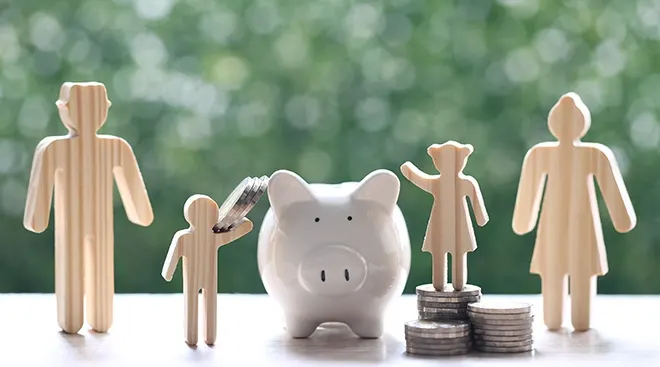Inflation Pushes the Cost of Raising a Child to Over $300,000
As inflation reaches a four-decade high, the costs are felt throughout America at the pump, the grocery store and out at restaurants. But parents may be getting hit the hardest.
Between increasing costs of childcare, transportation, education and more, a new report estimates that a middle-class family with two kids can expect to spend more than $18,000 a year. When you account for the 17 years you’ll likely spend with your children; the total amount comes out to around $310,000!
The Brookings Institution used data from the U.S. Department of Agriculture’s last “Expenditures on Children by Families Report” in 2017 and updated it to account for the higher inflation rates the US is seeing now. The expenditures measured in the report include a variety of family expenses like housing, food, clothing, after-school activities, healthcare and childcare. Though notably, the cost of sending a kid to college or paying for higher education is not included in these numbers.
This 2022 estimation shows a 9 percent increase in the cost of raising a child from two years ago. In an interview with The Wall Street Journal Dr. Isabel Sawhill, a senior fellow in Economic Studies at the Brookings Institution, talked about what this increase in inflation and overall costs would mean to families. “We know it’s [inflation] very high right now, but we also know that the Fed is stepping on the brakes very hard and that it’s going to come down,” Sawhill said, adding, “We don’t know how fast and to what level and how long it will stay somewhat elevated.”
“A lot of people are going to think twice before they have either a first child or a subsequent child because everything is costing more. You also may feel like you have to work more," Sawhill said. This sentiment of waiting to have children or foregoing them altogether because of increasing costs is something you can see over the past few years in the United States’ declining birth and fertility rates.
In an interview with Insider, Sawhill also notes that these increasing costs are likely to have an even greater impact on single-parent and lower-income families who weren’t included in the estimate. “It’s particularly important for lower-income families because the cost of raising a child, although it varies with your family income or socioeconomic status, it doesn’t vary that much,” Sawhill said. “The cost of raising a child is going to be a much larger proportion of the budget of a lower income family than of a higher income family.”
There is hopefully light at the end of the tunnel, though. Last week, President Joe Biden signed the Inflation Reduction Act, a $750 billion healthcare, tax, and climate bill, into law which The White House hopes will ease mounting pressures on all Americans.
If you are struggling with the high costs of raising a child, check out the USDA’s four tips for offsetting costs. You can also browse these solutions for finding affordable care here.
Navigate forward to interact with the calendar and select a date. Press the question mark key to get the keyboard shortcuts for changing dates.





















































